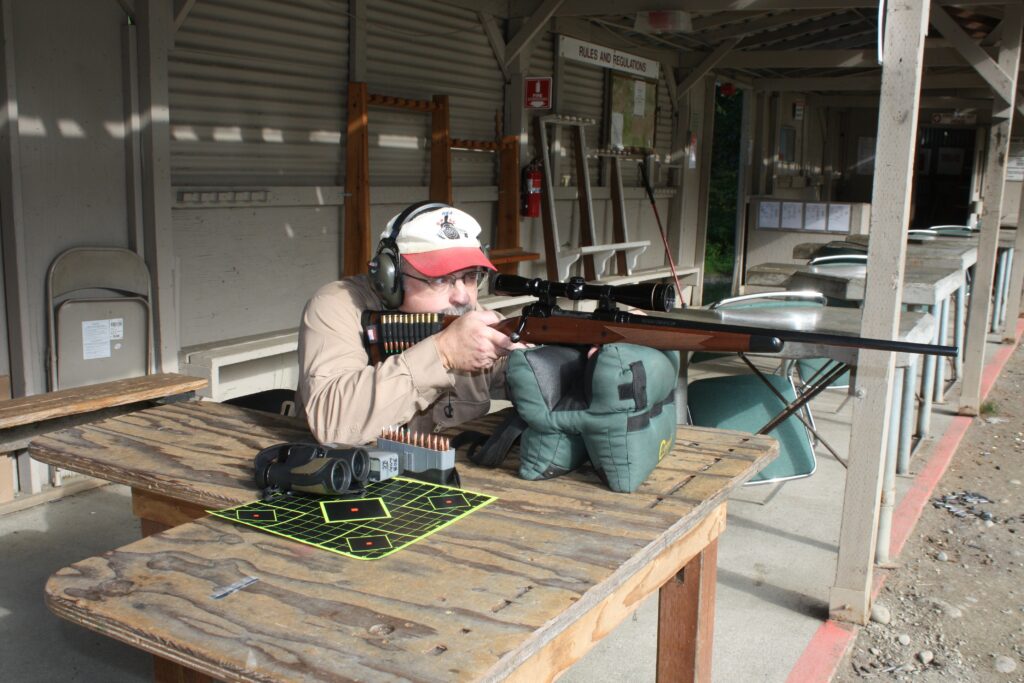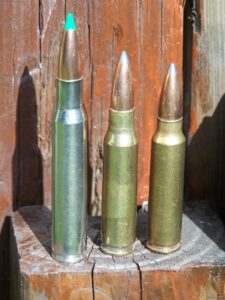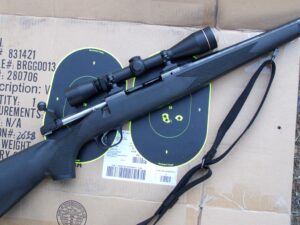
By Dave Workmam
Editor-in-Chief
When it comes to hunting big game across North America, cartridges based on the .30-caliber bullet have long been the “go to” choice every fall, whether someone is hunting brush country coastal bucks with a .30-30 Winchester lever-action inherited from grandpa, or using a .300 Winchester Magnum to launch projectiles across the plains of Montana, Wyoming, the Dakotas, Colorado or Utah.
So many popular cartridges have grown around this particular caliber of projectile, it may be impossible to name them all, and were one to try, there would likely be an argument over which is best and why such-and-such was left off the list.
A roundup would necessarily include the .30-30, .300 Savage, .307 Winchester, .308 Winchester, .308 Marlin Express, .30-06 Springfield, .30 Nosler, .300 Remington Short Action Ultra Magnum, .300 Winchester Short Magnum, .300 H&H Magnum, .300 Norma Magnum, .300 Winchester Magnum, .300 Weatherby Magnum, .300 Remington Ultra Magnum (long action), .30-378 Weatherby. Oh, and let’s not overlook the .30-40 Krag!
The common denominator is the caliber of the bullet, not necessarily the type, but the actual diameter of the projectile.
Somewhere back in the shadows of history, the gods must have smiled on the .30-caliber as a fine bore size, and from there, cartridge developers got carried away.

Over the years, I’ve hunted—and taken game with—different .30-caliber cartridges. My first buck fell to grandpa’s Model 99 .300 Savage lever-action, a rifle that has a special place in the gun safe today and is still capable of deadly accuracy out to 200-250 yards with my handloads topped with 150-grain Nosler Ballistic Tips or Speer Boattails of the same weight, over midrange charges of IMR 4895, one of the most consistent propellants I’ve ever used.
One thing I learned years ago is that the hottest loads are not always the best in terms of accuracy and recoil. It’s probably the “Wyatt Earp Principle” which tells us: “Fast is fine, but accuracy is final.”
I hunted for a couple of years with a vintage H&R single-shot in .308 Winchester; a rifle which proved itself on paper to be wonderfully accurate, and one of these days may come out of mothballs just for the sake of nostalgia.
My .30-06 Marlin MR7—a bolt-action marvel with which I made one of my better bragging shots several years ago on a moving buck at 355 yards as displayed on a rangefinder—digests my loads using the Nosler AccuBond ahead of Hodgdon’s Hybrid 100V rather well, as a recent trek to the range confirmed for the umpteenth time.
Also, in my gun safe is a Savage Model 14 bolt-action American Classic, chambered for the .308 Win. Cartridge. My pet load for the .308 is a 165-grain boattail (whether a Hornady, Sierra, Speer or Nosler) launched by the aforementioned IMR 4895. It’s been either the Nosler Ballistic Tip or Speer soft point doing the hurt on bucks I’ve shot, while my brother has anchored both of his bucks using the Hornady pills.
I’ve known guys to prefer the .300 Win. Magnum for both deer and elk, whether using factory ammunition or handloads, and I have yet to see a single animal get up to argue about caliber effectiveness.
Still, all of this anecdotal detail doesn’t really crack the code. What is so special about bullets of this caliber?
The short answer just might be “probably nothing,” except they seem to have very good ballistic coefficients (layman’s terms: they fly through the air with considerable stability over long ranges), especially those with spire points and boattails (tapered bases).
When I was a kid, way back in the last century, it was commonly held that the .30-30 Winchester has accounted for more deer than any other cartridge. It’s a belief I would challenge today, because the .308 and .30-06 are far more popular and in probably wider use than the 130-year-old levergun round, introduced back in 1895. Suffice to say all three have filled many a meat locker over the years, including mine.
With Labor Day Weekend looming, now is a good time to be pulling your rifle out of the gun safe (or the cabinet, corner closet or off the rack) and heading to the range to check your zero. I have learned over the years to sight all of my rifles to strike 2 to 3 inches high at 100 yards, which—based on the specific powder charges used in the different caliber cartridges I shoot, knowing the muzzle velocities as fired over a chronograph—typically puts bullets dead-on at 200-225 yards. This formula has worked for me and my brother repeatedly. Can’t hardly argue with notched tags, even if it sounds all wet to someone else.

A good way to rough check this theory is to record the muzzle velocity of a round, especially if it’s a handload, and then check ballistics tables found usually at the rear of the reloading manual you’re using. These tables will rell you about bullet drop at 200-300 yards (depending upon the muzzle velocity it can be quite a bit). In ideal conditions, all of this will work perfectly. I have never been on a successful hunt in which all of the conditions were ideal!
Despite the popularity explosion in recent years of calibers in the 6mm and 6.5mm arena, and the long-standing popularity of the .270 Winchester and 7mm Remington Magnum, guns with .30-caliber bores hold sway with a huge segment of the hunting public. For anyone so-equipped, September provides a great opportunity to do any necessary fine tuning of the sight/scope, get a new box of ammunition, run a patch down the bore, clean out the action and give it a drop of oil here and there.
The season is looming faster than you think.




